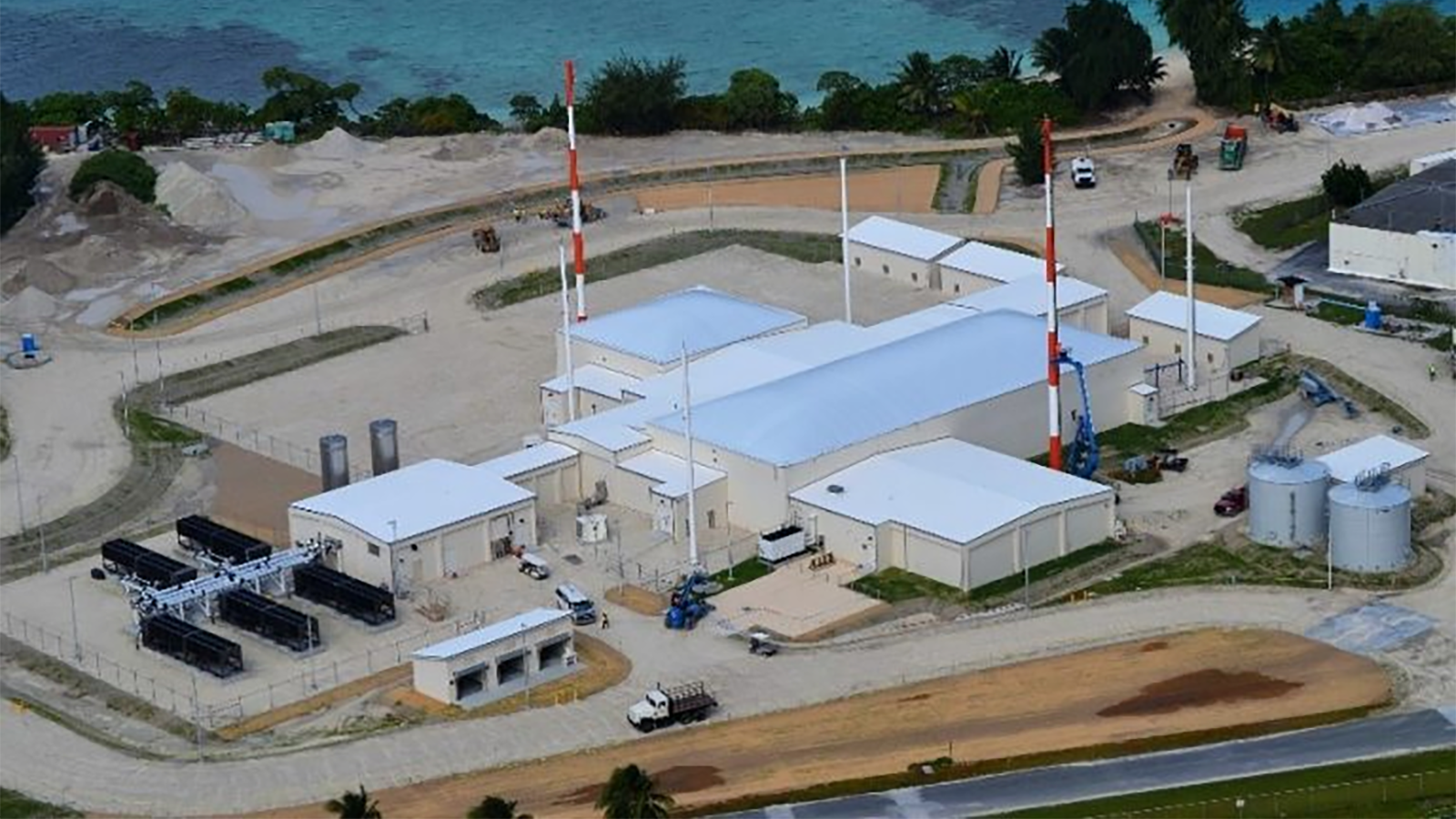
The Lockheed Martin designed House Fence site in the Marshall Islands. (Lockheed Martin)
Area SYMPOSIUM: While Area Pressure is creating some progress at updating the US military’s faltering laptop systems for checking the heavens, at minimum two vital sensor methods — the Space Fence radar and the Geosynchronous House Situational Awareness System (GSSAP) satellites — are nevertheless reliant on the previous tech.
The simple fact that two of the most fashionable and refined sensors in Room Command’s room domain consciousness (SDA) tool package will have to rely on the creaky CAVENet computer procedure, produced in the 2000s, for information assessment and sharing is a testament to just how painfully slow and complicated that lengthy-standing effort has been.
Related: Viewing in the dark: Room Power functions, slowly but surely, to improve monitoring of the heavens
The Office of Protection for two decades has been struggling to change, and enhance on, that more and more dysfunctional hardware and program essential to supply SDA functionality — an effort that has viewed stopgap after workaround more than the several years (think duct tape and glue) but as nevertheless no ultimate remedy. So even as new and enhanced systems appear on the web, operators are pressured to rely on that outdated data processing IT.
A person of all those newer technologies, the Space Fence floor-centered radar arrived online in 2020, and can see quite tiny objects down to the size of a cherry in Reduced Earth Orbit (although the lone radar facility at present in use can’t consistently track objects that compact). Constructed by Lockheed Martin to the tune of $1.5 billion, it is routinely tracking some 26,000 satellites and parts of place debris.
That capability to retain tabs on a big quantity of objects, on the other hand, has meant that it has been tough for Area Command to combine the extensive volume of data it offers into its historical processing devices.
Space Fence can’t instantly hyperlink with the 1980’s-period Area Defense Operations Heart (SPADOC) computer system system and computer software that is made use of to equally endeavor SSN sensors and populate the publicly out there Space-Track.org catalog of area objects.
As a substitute, its data is currently being fed into CAVENet, an offline computer system process for classified assessment that dates to the early 2000s. On CAVENet, analysts can run software program, termed the Astrodynamics Guidance Workstation (ASW), that makes it possible for increased precision collision examination and danger assessments for nationwide safety buyers.
“CAVENet was originally meant as an analyst platform for people to evaluate/manipulate information in techniques that the formal process (SPADOC) could not. It’s just a local network for UNIX computer systems jogging a bunch of largely customized-designed software,” mentioned Protected Earth Foundation’s Brian Weeden, who has followed the SDA problem in depth for a 10 years.
“But above time CAVENet began getting on operational missions simply because SPADOC couldn’t do it,” including functioning ASW and tasking of the SSN sensors, he included. “It was less difficult to add new abilities to CAVENet than it was to upgrade or switch SPADOC.”
With new hardware and application designed under the House C2 system becoming out there — primarily, Palantir’s Warp Main program and L3Harris’s ATLAS components and computer software to switch SPADOC — Area Command will be equipped to integrate Area Fence info to create a frequent place natural environment picture for satellite operators.
But they nevertheless require CAVENet to do it — which now in the mid-2000s was suffering from a dilemma of acquiring area areas since of their obsolescence [PDF] — at the very least for the foreseeable future.
“The 18th Space Command Squadron (SPCS) has the capability to combine data from House Fence via the Non-Regular Facts Pre-Processor (NDPP). ATLAS and Warp Core can the two take in Place Fence info. The NDPP deposits House Fence knowledge into CAVENet, and Warp Core can pull it from CAVENet and ship to ATLAS,” a single SSC official defined.
It is a related tale for GSSAP. The Place Drive in 2022 lofted two additional GSSAP satellites, crafted by Northrop Grumman, bringing the constellation of “neighborhood watch” satellites to six. GSSAP capabilities are labeled, but they are equipped to maneuver to get up shut and private with other satellites of interest to keep track of pursuits — and have carried out so vis-a-vis Chinese and Russian birds on many situation.
GSSAP knowledge is shipped to the 18th House Management Squadron as a result of the Red LAN “tactical data distribution node for room-based SDA sensors with direct connections into functions centers at various classification degrees,” the SSC formal reported. Crimson LAN places the details into CAVENet and Warp Core can pull it out, but in long term “direct feeds” from Purple LAN to Warp Main “are planned.”
In fact, at the minute it is unclear irrespective of whether House Force in fact will at any time be equipped to ditch CAVENet fully.
“It’s sophisticated and it relies upon on who you talk to, evidently. Right after decommissioning of SPADOC, the purpose is to proceed to migrate capability to ATLAS. So theoretically CAVENet could go absent,” a person industry supply said. “The operators say that they intend for CAVENet to stay as an analyst platform,” the supply extra, but the Room C2 application business office is most likely to “say formally that CAVENet goes away.”
Place Units Command did not reply a concern from Breaking Protection about what system or methods would be changing CAVENet, and when.




More Stories
Stellantis to restructure European dealer network in July 2023 • TechCrunch
SOLID Design Principles in C# with helpful examples
7 Reasons To Get A Forbrukslån & How To Get A Good One